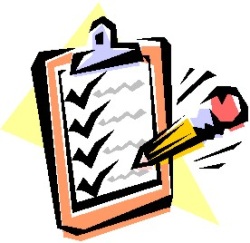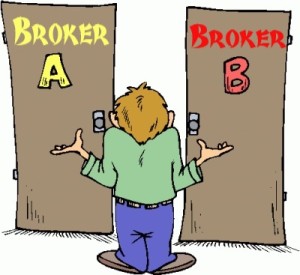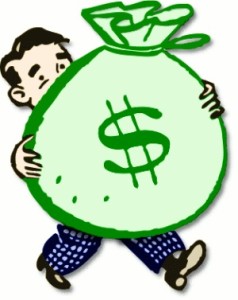Getting Started in Day Trading
This page will tell you how to become a day trader, what it takes to trade stocks and if day trading is right for you. Before we go over on how to become a day trader, lets quickly go over what a day trader does.

Day trading is trading shares of stock within the day in an attempt to generate short-term profits. Day traders close out their positions at the end of every day and then start all over again the next day.
The reason day traders close out their positions in a stock before the end of the day is because it can be risky to hold a stock overnight.
A trader does not want to wake up in the morning to find that the stock he bought has dropped significantly. So, by getting out of their positions by days end it protects them from the unknown risks of holding a particular stock of a company overnight.
Is Day Trading for You?

Before you figure out how to be a day trader, you need to find out if day trading is right for you.
In order to be a day trader there are emotional considerations, time commitments, your availability of funds, and if you have the ability to work alone.
So, you should ask yourself, am I able to work alone? Am I able to be disciplined and am I able to control my emotions?
Emotions & Temperament
A day trader must know how to control emotions and be able to keep certain emotions in check. Traders face a variety of emotions and whether or not you are able to keep you emotions under control can turn into success or failure.
Traders might face many emotions from the excitement or thrill of making a great trade, to panic of trying to get out of a trade, or maybe depression after losing money, and many other range of emotions.
You can not let emotions get in the way of your trading. One of the keys to become of successful trader is if you master your emotions then you will master the market. In trading you must be logical, not emotional – you must stick with your trading system and rules and be disciplined.
Get Training and Educated in Trading

In order to become a day trader, you definitely need to get educated in how to trade. There are many ways on learning how to day trade. You can read books on it, there is plenty of information on the internet that teaches how to trade and there are dozens of educational programs from trading academies to online courses in trading.
Paper Trading
Once you have learned some of the basics of trading, the best way to learn how to trade is practice and the best way of practicing is paper trading.
Paper trading, also called “virtual stock trading” is basically a simulated trading process in which you can practice trading without using real money. There are some websites out there that let you setup a free account so that you can paper trade. In addition, some brokerages offer you a chance to paper trade without having an account with them, such as SureTrader.
Create a Trading Plan

Trading is a business and like any other business it needs a plan. Everyone has heard the saying, “if you fail to plan, then plan to fail.”
Therefore, to become a day trader you need to create a trading plan. A trading plan is like a business plan.
Developing a Trading Plan is key to become a successful trader and it defines what is supposed to be done, why, when, and how. It covers your trading personality, personal expectations, risk management rules, and trading system or strategy.
A day trader must always stick to the trading plan and when followed, a trading plan will help limit trading mistakes and minimize your losses.
Decide Your Trading Strategy & Techniques

Deciding what type of trading style you do is a must and it needs to be implemented into your trading plan. The type of trading technique you choose all depends on your personality and what works best for you.
Some traders are able to figure out a trading style that best suits them right away, while others can take quite some time to find a trading style that best suits them.
If you can’t figure out a trading style, the best thing to do is to keep paper trading and test out different trading styles until you determine one that works best for you.
There are dozens of trading techniques out there. Lets go over a few of these different trading styles.
>> Trend Following
In the trend trading strategy, a trader seeks to enter a position in the direction of an existing trend that the stock is heading. This may include entering in a short or long position, depending if a stock is trending upwards or downwards.
Traders that use this strategy ride the trend for as long as possible and when the trend reverses this signals the trader to exit the trade. This trading strategy can work for day traders and swing traders as well.
>> Momentum Trading
In momentum trading, traders look for stocks that is in motion in one direction on high volume and try to jump on board to ride the “momentum train” to reach profits. This may include going long or short in a position.
>> Scalping
Scalping is a trading strategy that looks to profit on small price changes. Their purpose is to buy (or sell) large amount of shares in blocks at the bid (or ask) price and then quickly sell them a few cents higher (or lower) for a profit.
>> Fad or Capitulation Trading
Also known as “fading” or capitulation trading, this trading strategy is used when a stock is at a capitulation point. A trader would sell short when a price is rising and buy when it’s falling.
>> Read More On Day Trading Strategies & Techniques
Choosing & Opening a Brokerage Account

Choosing the right stock broker is definitely one of the keys in successfully becoming a day trader. With so many stock brokers out there, it can be difficult in choosing one.
For many, one of the main factors when choosing a broker is the commission. Commission rates vary from broker to broker and each broker has a different pricing structure, such as some may have a flat-fee commission or some may charge per share.
Trading platform
Another factor for choosing a broker is the fees and costs of using their trading platform. Day trading requires a professional trading software platform and a high-speed internet connection. The trading platform displays charts, quotes, technical indicators and lets you execute trades.
But, just because a broker offers great prices on the platform and has very cheap commission rates doesn’t necessarily make them the best of all stock brokers to choose. Some brokers may have very cheap rates, but have poor execution on trades, low quality tools or platform and horrible customer service.
The best brokers may not always have the cheapest commission rates of all the others, but has a competitive commission structure along with a good mix of great trade execution, high-quality tools & platform and great customer service, which ultimately gives the trader the the greatest value.
⇒ Read More On Choosing A Broker
Money & Funds

In order to become a day trader you need to determine if you can even afford to trade. Trading should only be done with risk capital. Risk capital is money that you can lose.
If you’re trading with money that you need to pay the bills with, it will have a huge negative impact on your ability to make trading decisions.
Imagine how stressed you’ll be while you’re trading and knowing that you need this that you can’t afford to lose because you need to pay bills with that money. So, don’t risk what you can’t afford to lose!
Pattern Day Trading Rule
In order to become a day trader you need to understand the pattern day trading rule (PDT rule).
The PDT rule is a rule in the United States, under FINRA rules, and states:
Any customer that day trades (buys then sells or sells short then buys the same security on the same day) four or more times in five business days, provided the number of day trades are more than six percent of the customer’s total trading activity for that same five-day period. Under the rules, a pattern day trader must maintain minimum equity of $25,000 on any day that the customer day trades. The required minimum equity must be in the account prior to any day-trading activities. If the account falls below the $25,000 requirement, the pattern day trader will not be permitted to day trade until the account is restored to the $25,000 minimum equity level.
So basically, in order to be a day trader you need atleast $25,000 in your account to day trade stocks.
But, just because you don’t have $25k in your account doesn’t mean you can’t trade. It just means you can’t day trade. You just can’t place more than 4 trades per day.

